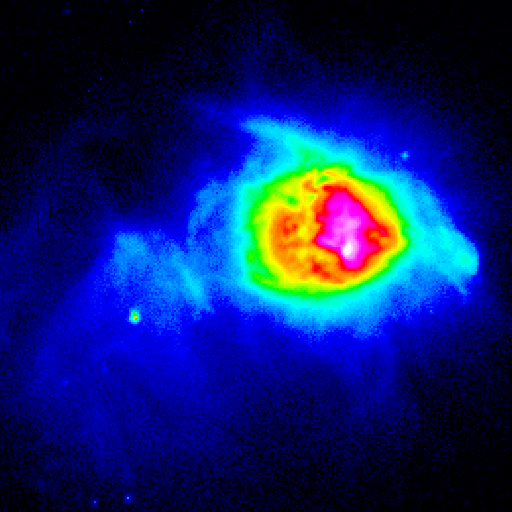Massive stars, of a few tens, even a hundred solar masses, are still very badly known. Their lifespan is very short, of a few million years only, and they have hardly time to come out of the molecular cloud which gave them birth. They remain hidden during a significant fraction of their life inside an opaque " cocoon " of matter and dust. The pressure of radiation on the dust grains limits gas accretion, and the mass of the final star. This is why in low metallicity galaxies, with low abundance of dust like the Small Magellanic Cloud, one can hope to find more massive stars.
M. Heydari-Malayeri and his collaborators thus used the high space resolution of Hubble Space Telescope to resolve a compact area, of a very rare type, of massive star formation. The exceptional quality of the images makes it possible for the first time to penetrate inside this area called N88 which is located in the Small Magellanic Cloud.

The images show that the area is made up of two nebulosities in interaction (above an H-alpha image in false colors). The youngest and most compact, named N88A (diameter of 3.5 second of arc, corresponding to approximately 3 light-years), is generated by massive stars which have just been born. Two of these stars at least are hidden in an extremely high quantity of dust, astonishing for such a galaxy. A dust lane crossing the nebula north- south is a vestige of the parental interstellar cloud. The powerful radiation of lately formed massive stars, dissociated the molecules and ionized the surrounding cloud. As for component N88B, its central source is a multiple star animated with a very violent wind (it ejects its matter at very high rates) which interacts and carves the surrounding medium. Photometric studies on a large scale of this area make it possible to determine the chronology of the stellar formation in this part of the Small Magellanic Cloud.
Heydari-Malayeri M.(Obs Paris), Charmandaris V.(Obs Paris and Cornell, USA), Deharveng L.(Obs Marseilles), Rosa M.R.(ESO), Zinnecker H.(Postdam Inst.) (1999) Astronomy and Astrophysics, 347, 841
For more information and images in true colors, click here.
